MediaTek Dimensity 8050
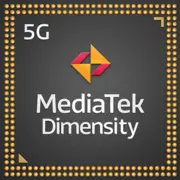
MediaTek Dimensity 8050: Balancing Power and Affordability in 2025
Analysis of the mid-range smartphone processor
Introduction
In 2025, mobile processors continue to evolve, offering users more capabilities for less money. The MediaTek Dimensity 8050 is a striking example of this trend. Launched in mid-2024, this chip occupies a niche between budget and flagship solutions, combining high performance, energy efficiency, and support for modern technologies. In this article, we will explore who the Dimensity 8050 is suitable for, what it is capable of, and how it compares to its competitors.
1. Architecture and Process Technology: The Foundation of Stability
CPU: 8-core Flexibility
The Dimensity 8050 is built on the classic MediaTek configuration of 1+3+4:
- 1× Cortex-A78 at 3.0 GHz for resource-intensive tasks;
- 3× Cortex-A78 at 2.6 GHz — a balance between performance and power consumption;
- 4× Cortex-A55 at 2.0 GHz for background processes.
This configuration ensures smooth multitasking and conserves battery life.
GPU: Mali-G77 MP9 — Time-Tested Graphics
The Mali-G77 MP9 GPU, although not the newest, is optimized for a 6nm process technology. It supports:
- Resolution up to 2520×1080 pixels (FullHD+);
- Screen refresh rate of 144 Hz;
- Vulkan 1.1 and OpenGL ES 3.2 APIs for gaming.
6nm Technology
TSMC's 6nm process technology ensures moderate heat generation and power consumption. This allows the chip to be installed in compact devices without bulky cooling systems.
2. Performance in Real Tasks
Gaming
With the Mali-G77 MP9, the processor handles games like Genshin Impact on medium settings (40-50 FPS) and PUBG Mobile on high settings (60 FPS). However, in 2025, some titles with advanced graphics (such as Honkai: Star Rail) require a drop in detail settings.
Multimedia
- Support for 4K HDR video recording and playback;
- Hardware decoding of AV1 — streaming high-quality content without draining the battery.
AI Applications
The built-in AI accelerator APU 3.0 enhances:
- Photography (night mode, autofocus);
- Voice recognition (Google Assistant, Siri);
- Charge optimization (adaptive brightness control).
Energy Consumption and Heating
Thanks to the 6nm process technology and dynamic frequency management, the chip rarely overheats. In PCMark Battery Life tests, smartphones with the Dimensity 8050 show 10-12 hours of active usage.
3. Built-in Modules: Future Connectivity
5G Modem
The integrated modem supports:
- Sub-6 GHz networks (speeds up to 4.7 Gbps);
- 2CC CA frequency aggregation;
- Simultaneous operation of two SIM cards with 5G.
Wi-Fi and Bluetooth
- Wi-Fi 6 (up to 2400 Mbps) — stable connections in congested networks;
- Bluetooth 5.2 with LE Audio support — energy-efficient audio transmission to headphones.
Navigation
The chip works with GPS, GLONASS, Galileo, and BeiDou, and supports Dual-Frequency GPS for accurate positioning (±1 meter).
4. Comparison with Competitors
Qualcomm Snapdragon 7 Gen 3
- Better GPU (Adreno 725) — higher FPS in games;
- More expensive: smartphones with SD7G3 start from $450, while devices with Dimensity 8050 start from $350.
Samsung Exynos 1380
- Similar CPU performance, but weaker graphics (Mali-G68 MP5);
- Lower energy efficiency (5nm Samsung process vs. 6nm TSMC).
Apple A16 Bionic
- Leader in single-threaded performance (Geekbench 6 Single-Core: ~1950);
- Lack of 5G in budget iPhones (available only in Pro models).
5. Use Cases
Gaming
Suitable for casual games and medium settings in AAA titles. It is recommended to choose smartphones with graphics enhancements (such as gaming modes in Realme GT Neo 4).
Everyday Tasks
- Fast app performance;
- Smooth scrolling on social media even at 120 Hz.
Photography and Video
- Support for cameras up to 200 MP (in pixel binning mode — 50 MP);
- Recording video 4K@60fps with EIS;
- AI enhancements for portraits (background blur, color correction).
6. Pros and Cons
Advantages:
- Optimal price-performance ratio;
- Support for current connectivity standards (5G, Wi-Fi 6);
- Good energy efficiency.
Disadvantages:
- Mali-G77 MP9 lags behind newer GPUs (such as Mali-G710);
- No Wi-Fi 6E;
- Limited ray tracing support in games.
7. Practical Tips for Choosing a Smartphone
What to Look For:
1. Cooling System — Vacuum chambers or graphite plates enhance gaming performance.
2. Display — A refresh rate of 90-120 Hz will improve interface smoothness.
3. Software Optimization — Android updates and custom skins (MIUI, Realme UI) affect responsiveness.
Typical Devices:
- Realme 11 Pro+ ($370) — 200 MP camera, AMOLED 120 Hz;
- Xiaomi Redmi Note 13 Pro 5G ($400) — glass body, stereo speakers;
- Vivo V30 Lite ($350) — focus on battery life (5000 mAh).
8. Final Conclusion: Who is the Dimensity 8050 For?
This processor is an ideal choice for those seeking:
- A smartphone under $400 with 5G support;
- A device for work, streaming, and moderate gaming;
- Long battery life without compromising performance.
The MediaTek Dimensity 8050 proves that premium-class technology is becoming more accessible. It may not break records, but it offers stability and sufficient power for most users in 2025.
Basic
3x 2.6 GHz – Cortex-A78
4x 2 GHz – Cortex-A55
GPU Specifications
Connectivity
Memory Specifications
Miscellaneous
Benchmarks
Phones with Dimensity 8050
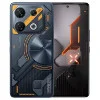
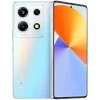
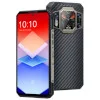
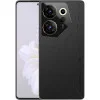

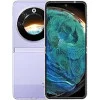
Comparison of Devices with Dimensity 8050
Compared to Other SoC
Related SoC Comparisons
Share in social media
Or Link To Us
<a href="https://cputronic.com/soc/mediatek-dimensity-8050" target="_blank">MediaTek Dimensity 8050</a>

